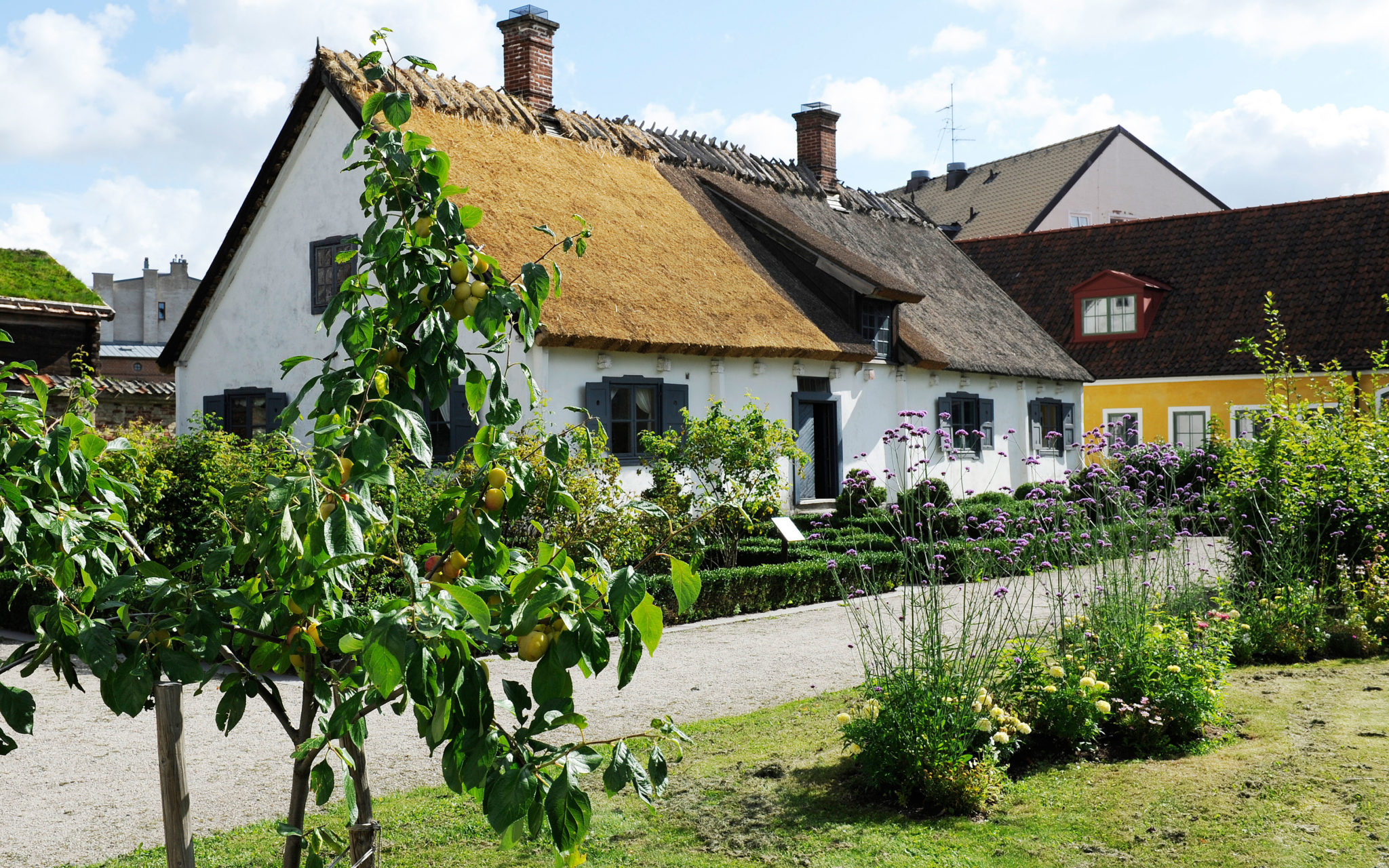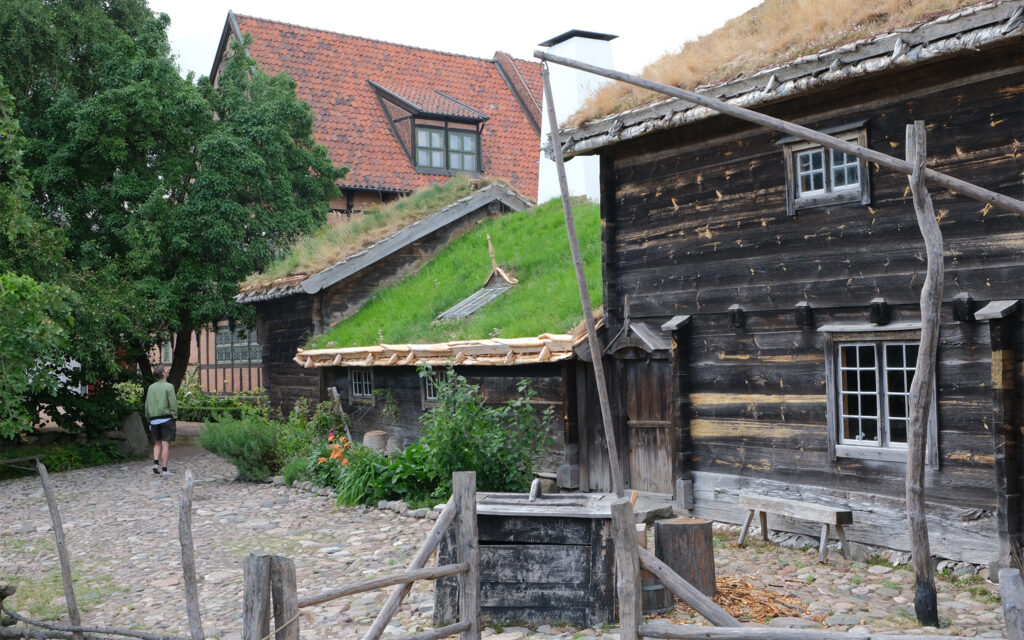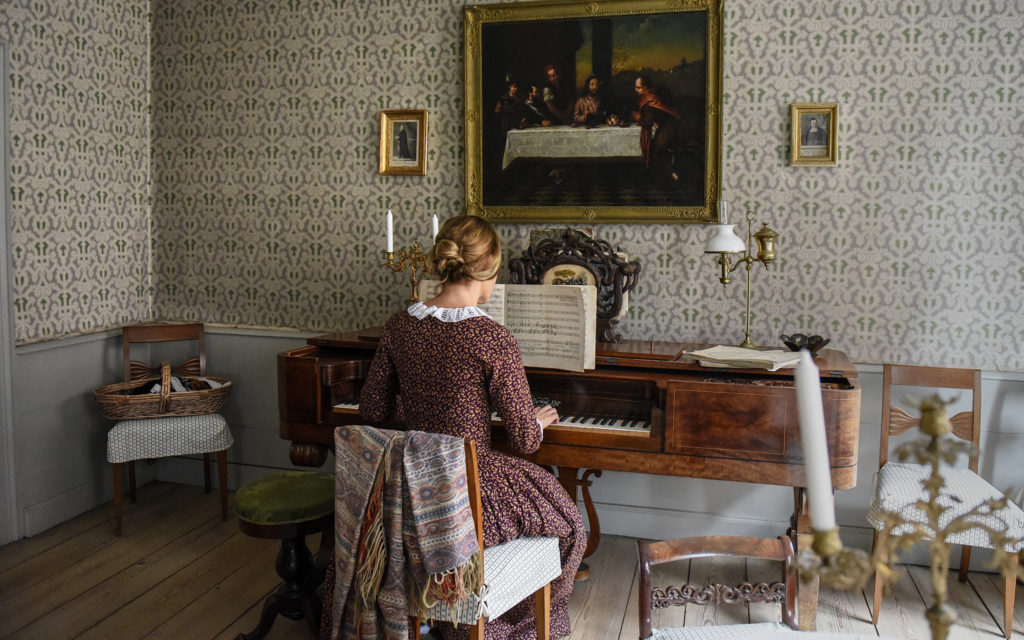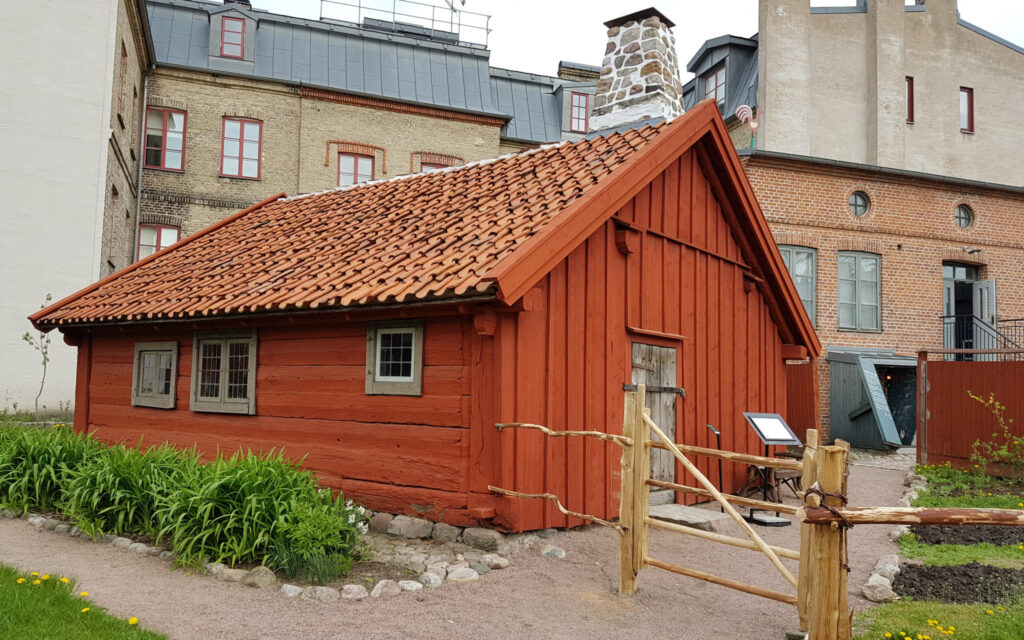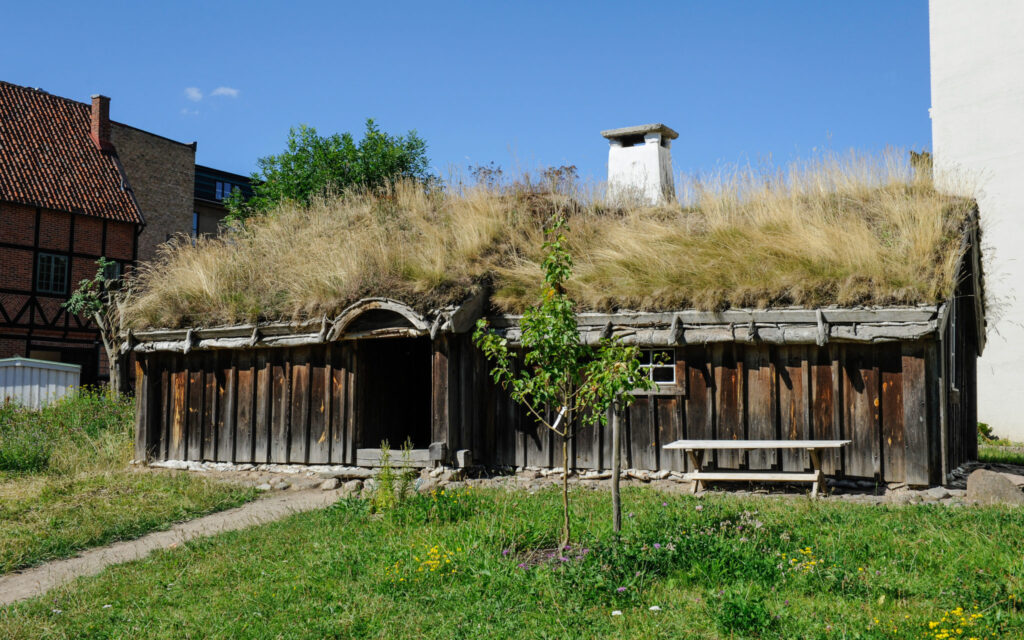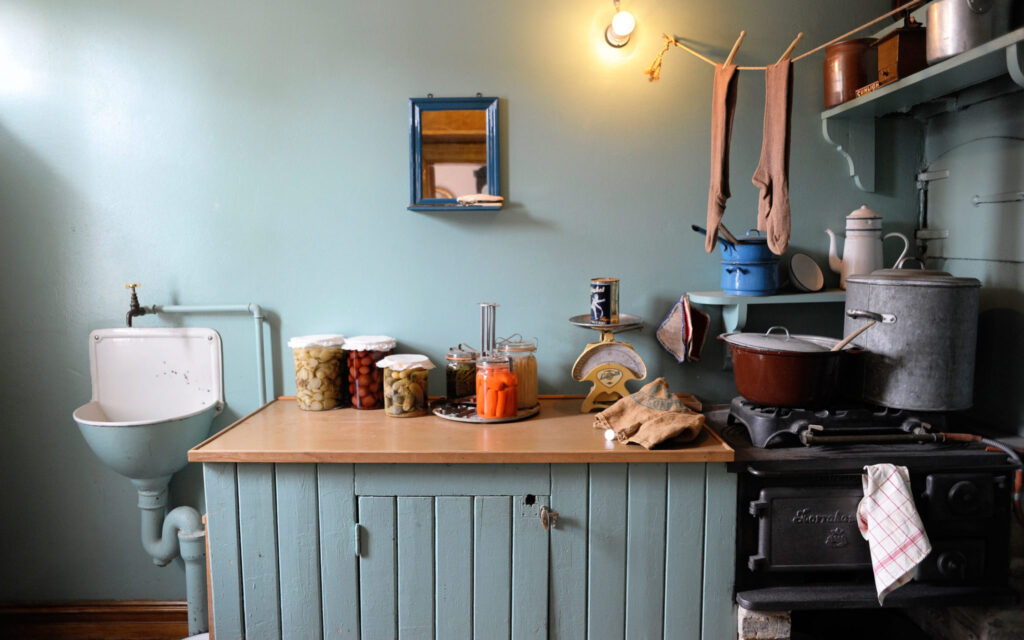You are now outside the Västra Vram Vicarage. Or rather, this was one of four buildings that made up the vicarage in Västra Vram, outside Kristianstad in Scania (Skåne). Step into the house and see how life could have been for Vicar Bolmstedt’s family in the mid-18th century!
Pass through the hall and walk straight into the big reception room. The portrait on the wall to your right is of Vicar Johan Bolmstedt. See how his eyes follow you? This portrait was painted by the well-known artist Alexander Roslin – although this is a copy.
The instrument in this room is called a clavichord. It was a common keyboard instrument in the home until the piano made its breakthrough during the 1800s.
Have a peek into the dining room! The table is laid for breakfast and awaits Mr. Lidén, a guest passing through on his journey to the continent. Note the teapot and teacup from China on the small side table.
Beyond the dining room is the bedroom. Although you can’t enter this room, you should still be able to see the red flock wallpaper. It is original and has clad these walls since the 1700s, as has the forest mural on the wall above the clavichord.
At the other end of the reception room, you can see into the guest room. On the bed lies a bed warmer. It was filled with hot stones and then pulled along the bedsheets to warm them up.
Go back into the entrance hall. The vicar’s study is to the right and the kitchen to the left. Would you know how to cook a meal over an open fire?
Further reading:
The booklet Kulturen Open-Air Museum provides more information about the Västra Vram’s Vicarage and the other buildings included in this tour. It is available in the museum shop for 60 SEK.
